Cat Health
What Are Hairballs in Cats? Causes, Symptoms, & Simple Remedies
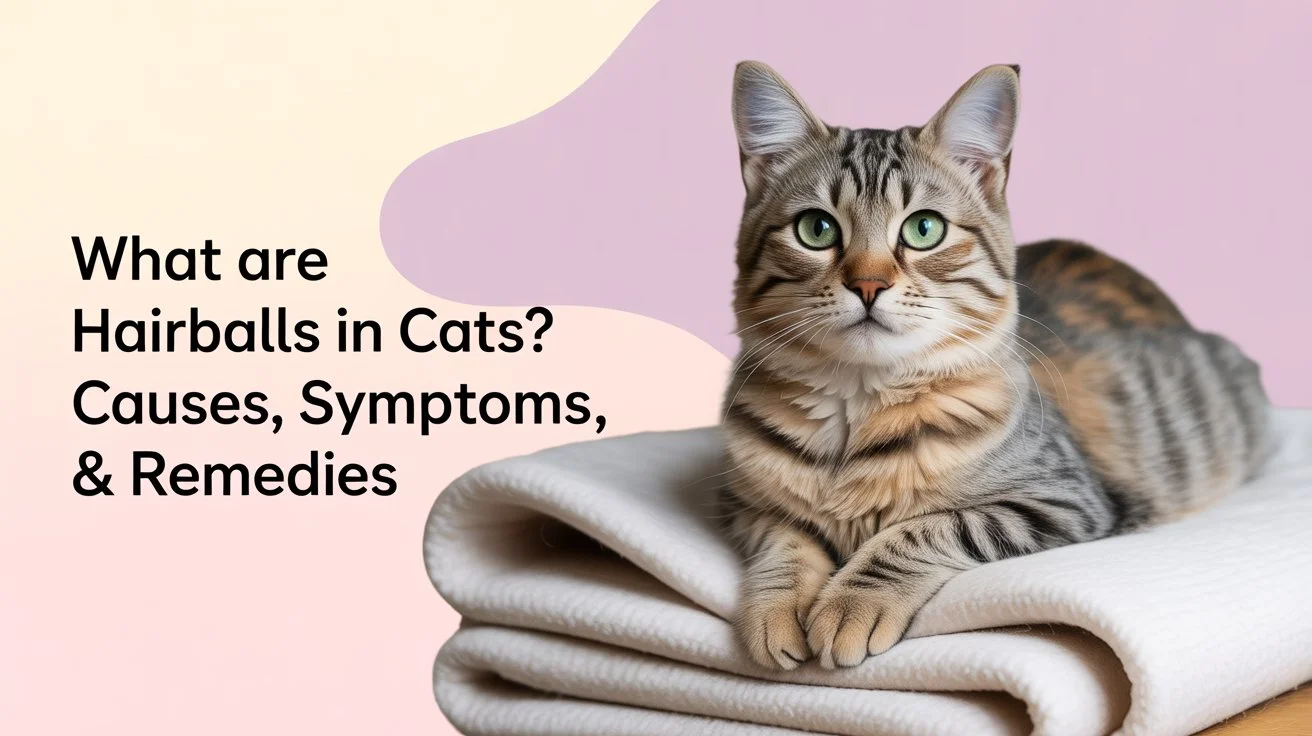
Introduction: Muffin’s First Hairball

The first time it happened will always be a memory for me. At midnight, the house was quiet and I heard an awful noise coming from the end of the bed. My heart skipped.
Muffin, my little tabby cat, was crouching down, her belly was getting tighter, her eyes were getting bigger, and she was making a noise I had never heard before. What is the first thing that pops into your head? She can’t breathe enough. I’m afraid she might choke. I jumped out of bed in a hurry and got ready to pick her up and take her to the vet.
A wet ball of fur fell on my blanket before I could even get up. She looked relieved, shook her head, and then, shockingly, went back to licking her paw as if nothing had happened.
I had to look at the mess, which made me feel both better and worse, and I was completely confused. I had never seen a cat hairball before that.
Over the next few weeks, it happened again. Muffin would groom herself after meals, all calm and content, then a day or two later—hack, gag, spit, furball. I knew that wasn’t just throwing up, but I didn’t know exactly what was going on in her stomach.
And honestly, it worried me. Was it normal? Was she sick? That’s when I decided to learn more about What Are Hairballs in Cats?, what Causes them, and how I can make things easier for Muffin and myself (selfishly) when I have to clean up at 2 a.m.
What Are Hairballs in Cats?
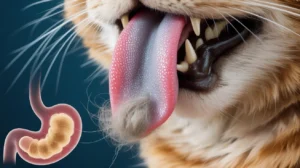
Hairballs (the technical word is trichobezoars, though let’s be real—no cat parent says that) are basically clumps of fur that your cat swallows while grooming.
See, a cat’s tongue isn’t smooth. It’s covered in tiny backward-facing barbs, almost like Velcro hooks. That’s what makes their licks feel like sandpaper. It’s great for pulling dirt and loose fur off their coat… but here’s the catch: all that loose fur ends up swallowed.
Most of the time, it passes straight through the digestive system, and you never even notice. It comes out the normal way—yep, in the litter box. But sometimes, instead of moving along smoothly, the fur mats together in the stomach. That’s when your cat does the classic gag-hack routine to get it back up.
So, occasional hairballs? Normal. But frequent hairballs? That’s when you should pay attention.
Have you ever been woken up in the middle of the night by that unmistakable sound of gagging? That’s when I really asked myself: What Are Hairballs in Cats?
Causes of Hairballs in Cats
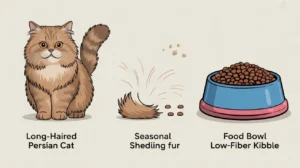
Learning the “why” behind Muffin’s hairballs actually helped me figure out how to prevent them. Here are the main Causes:
-
-
Excessive Grooming
-
Long-Haired Breeds
-
Seasonal Shedding
-
Diet Issues
-
Health Conditions
-
Does your cat lick themselves more when they are stressed or shed? I started noticing Muffin did both. It made me realize more deeply: What Are Hairballs in Cats? And why do they matter?
Symptoms of Hairballs in Cats
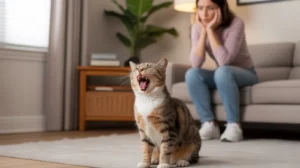
So how do you know when your cat’s dealing with hairballs? Here’s what I noticed with Muffin, plus the usual Symptoms vets mention:
-
-
Hacking or gagging sound
-
Vomiting fur clumps
-
Poop with strands of fur
-
Constipation
-
Less appetite
-
Sluggish or hiding
-
Coughing without results
-
One random hairball now and then? Fine. But if your cat seems uncomfortable, keeps gagging without results, or stops eating—you need to take it seriously.
👉 Have you ever thought your cat was choking, only to find out it was “just” a hairball? I’ll admit, I did. That’s why I kept asking myself: What Are Hairballs in Cats? And what can I do about them?
Why Hairballs Matter More Than We Think
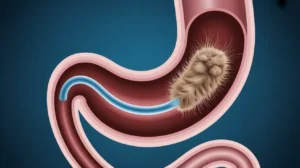
At first, I shrugged them off. Gross? Yes. Dangerous? Probably not. But actually, I learned hairballs can sometimes cause real trouble.
In the event that a hairball becomes stuck and can’t be thrown up or passed through the intestines, it can lead to a blockage.
Think about how it feels for a cat: always coughing, gagging, and having an upset stomach, even if there aren’t any blockages.
That’s why I stopped thinking of hairballs as “just part of cat life” and started looking for real solutions to What Are Hairballs in Cats?
Simple Remedies for Hairballs in Cats
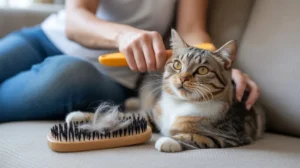
Here’s what actually worked for Muffin (after some trial and error). These are Simple Remedies that any cat owner can try:
-
-
Regular Grooming
-
Hairball Control Cat Foods
-
Add Fiber
-
Hydration is Key
-
Hairball Gels or Pastes
-
Environmental Enrichment
-
👉 Which of these do you think would be best for your cat: brushing them more, changing their food, or giving them more time to play?
Prevention: Step-by-Step Routine
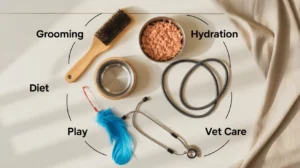
You can’t stop hairballs completely, but you can reduce them with consistency.
-
-
Grooming once a day or week
-
Balanced Diet
-
Hydration tricks
-
Play More
-
Vet Visits
-
Adding these steps one by one changed everything. Muffin went from throwing up hairballs weekly to maybe once every couple of months. For me, that was huge. That’s the answer to What Are Hairballs in Cats?—and how to manage them daily.
When to See a Vet
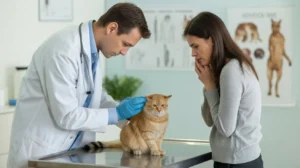
Not every hairball is harmless. Call your vet if your cat:
-
-
Gags often without producing a hairball.
-
Doesn’t eat for more than a day.
-
Has a big belly or can’t poop.
-
Seems very lethargic.
-
Vomits more than once or twice in a day.
-
Sometimes what looks like “just hairballs” can be something more serious. Better safe than sorry.
Final Thoughts
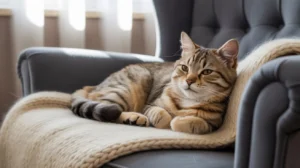
What Are Hairballs in Cats? They are balls of fur that have been swallowed. Most of the time, they don’t hurt anything, but sometimes they do.
They happen because of grooming, shedding, diet, or health issues. You can’t completely eliminate them, but you can reduce them with grooming, diet, hydration, play, and vet care.
The first time Muffin had a hairball, I was scared to death. But honestly, it made me pay more attention to her daily habits and health.
How often does your cat cough up hairballs? And which fix are you going to try first?
Trust me, a little routine plus these Simple Remedies can really help. Muffin shows that you can handle them like a pro by making a few small changes.
Cat Health
Can Kitten Eat Adult Cat Food, Vet’s Advice, 3 Safe Stages to Switch
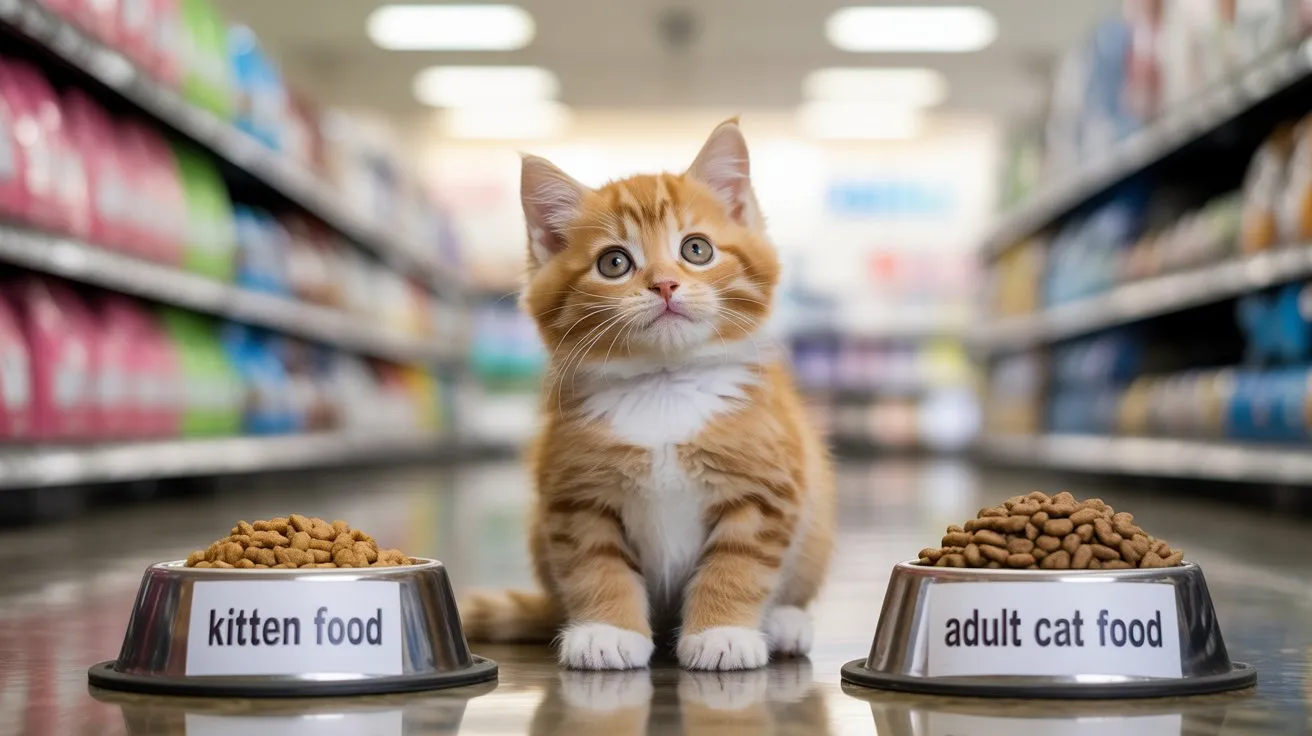
Introduction:
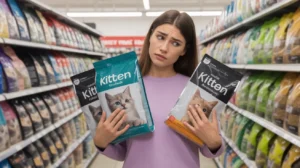
My Confusion at the Pet Store
One tired evening, I found myself in the pet store, half-thinking about Muffin, my little six-month-old tornado of fur. I stopped in front of the shelves, blinking at bag after bag. One said kitten food. Another said Adult Cat Food. My brain went, “Wait… Can Kitten Eat Adult Cat Food, or am I about to screw this up?”
Have you ever stood in that same aisle, feeling like the shelves were judging you? If yes, you’re not alone. Let’s unpack it.
So, Can Kittens Eat Adult Cat Food?
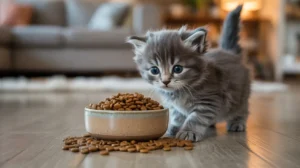
Sure, they can chew it. They’ll probably even like it. But… they really shouldn’t live on it. Many new cat owners wonder, Can Kitten Eat Adult Cat Food, and here’s why the answer matters.
Here’s why: kitten food is made like a growth booster. It’s packed with extra protein, extra fat, and denser calories. That’s because kittens are basically little energy furnaces — they burn through food like crazy while building bones, muscles, and brains.
Adult Cat Food? That’s built for a body that’s already “done growing.”
Think of it like this: imagine handing a 10-year-old nothing but coffee and toast every morning. Will they survive? Yeah. Will it cover their growing needs? Nope. That’s what feeding Adult Cat Food too early is like.
Vet’s Advice: Why Kitten Food Matters?
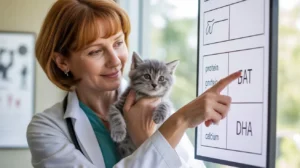
When I finally asked Muffin’s vet, she laughed (apparently it’s one of the most common questions ever) and broke it down into three simple points:
-
- Protein + Fat = fuel. Kittens burn energy like a toddler on sugar. Their food needs to keep up.
- Special nutrients. Stuff like taurine and DHA — crucial for eyesight, brain wiring, and heart health. Adult Cat Food has less of it.
- Bones + muscles. Extra calcium and phosphorus give kittens a stronger frame while they’re growing.
She also reminded me of something I had been ignoring in the store: kitten food is pricier, but it’s not just a marketing trick. It’s built to match their fast growth needs, which makes it worth the extra cost.
Her exact words were something like: “It’s not a disaster if she sneaks a few bites of Adult Cat Food. But switch her fully too early and you’re slowly chipping away at the foundation of her growth.”
That one line stuck with me as real vet’s advice I could trust.
When Should You Switch to Adult Cat Food?
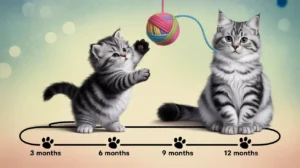
Here’s the good news — the timeline is simple. Many cat parents ask When to switch, and this is what vets usually recommend:
-
- Most kittens do fine switching around 12 months.
- Bigger breeds, like Maine Coons, stay on kitten food until 15–18 months.
- Spayed or neutered kittens? Sometimes the switch starts a little earlier to avoid weight gain.
Basically, don’t rush. They’re only little once, and those months shape everything.
And if you’re still worried about cost like I was, remember this: the real saving isn’t in the food bag, it’s in preventing health problems later. That one thought alone changed how I looked at the shelves and answered my own question: Can Kitten Eat Adult Cat Food too early? Not safely.
How to Switch Safely: The Step-by-Step
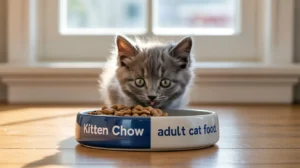
This part made me nervous because Muffin was dramatic about food. (If cats could roll their eyes, she definitely did when I changed her dinner.)
Here’s the step-by-step plan my vet suggested:
Days 1–3: 25% Adult Cat Food, 75% kitten food.
Days 4–6: Half and half.
Days 7–10: 75% adult, 25% kitten.
After ~2 weeks: 100% Adult Cat Food.
And the golden rule:watch closely. Upset tummy? Soft stools? Flat-out refusal?Go back a step and slow down.
Muffin gave me “this isn’t dinner” eyes on day four, and I almost caved. But sticking it out worked — two weeks later she was crunching happily with no midnight messes on the carpet. The plan proved that yes, Can Kitten Eat Adult Cat Food eventually, but only with the right transition.
Real-Life Challenges Cat Owners Face
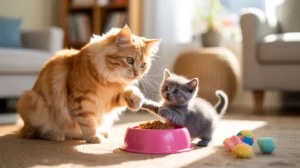
Switching sounds easy on paper, but in real life? Not so much.
-
- Picky eaters. A friend’s kitten literally wouldn’t touch adult kibble until she softened it with warm water. Problem solved.
- Money stress. Kitten food is more expensive. But my vet reminded me: it’s cheaper than paying vet bills later. That shut down my inner accountant.
- Multi-cat chaos. In homes with both kittens and adults, keeping bowls separate feels like a circus. My hack? Feed kittens in another room. Works better than constant shooing.
If you’ve got a “food thief” older cat at home, you know exactly what I’m talking about when asking yourself Can Kitten Eat Adult Cat Food without issues.
FAQs – Quickfire Answers

Q: My kitten ate adult food once. Should I panic?
Nope. One meal won’t hurt. Problems come if it becomes the main diet.
Q: Can I keep mixing forever?
Not ideal. Mixing is only for the transition stage, not long-term.
Q: Homemade food? Yay or nay?
Nay — unless a vet nutritionist builds the recipe. Most DIY meals miss key nutrients.
Conclusion: The Takeaway
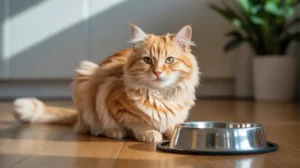
So, Can Kitten Eat Adult Cat Food? Technically yes. But should they? Not until they’re grown.
Here’s the cheat sheet worth pinning on your fridge:
-
- Stick with kitten food for 12 months (longer if you’ve got a big breed).
- Switch slow, not overnight.
- Watch how your kitten reacts, and check with your vet if you’re unsure.
Once I followed this plan with Muffin, my anxiety disappeared. She grew into a playful, healthy, slightly spoiled cat — but strong and thriving all the same.
And if you’re still standing in that aisle, staring at bags and doubting yourself, remember this: the best gift you can give your kitten is the right food at the right time. The rest will fall into place — and your kitten will thank you with every headbutt and purr.
Cat Health
Wet vs Dry Cat Food – Which Is Better? A Vet’s Guide
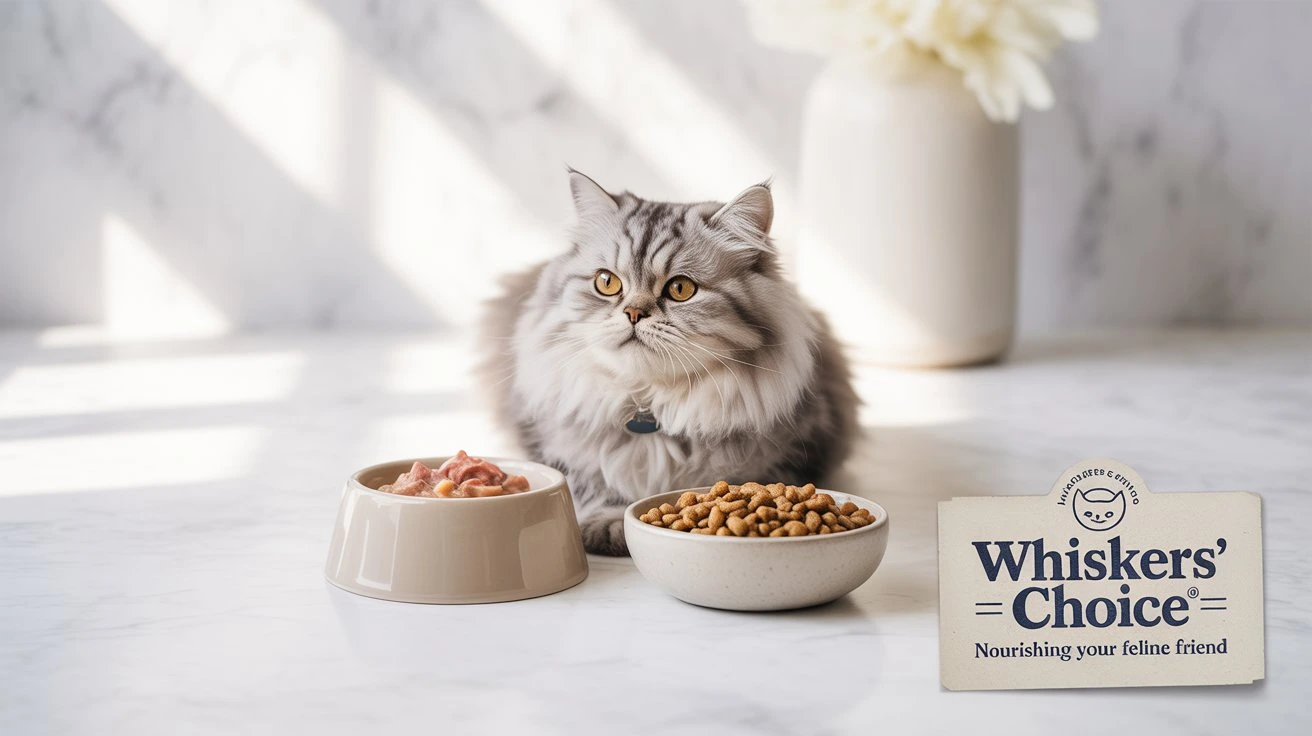
Introduction with A Short Story

When I first adopted my cat, Milo, I honestly thought food shopping would be the easiest part. Walk into a pet store, grab a bag or a few cans, and done. But, oh boy, it wasn’t that simple.
I found myself staring at two aisles: shiny cans of wet food on one side and big colorful bags of dry food on the other. I asked myself: “Wet vs dry cat food which is better?” And to be honest, I didn’t know. Milo seemed curious about everything, but I was the one confused and stressed.
Maybe you’ve faced that same moment? Standing there, wondering what’s healthier, what’s more affordable, and most importantly, what your cat will actually eat.
This post is exactly about that — helping you decide with facts, real experiences, and vet-backed guidance.
Why This Choice Matters
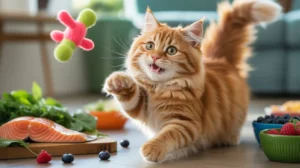
Food isn’t just about filling the bowl. It’s directly tied to your cat’s health, energy, and even lifespan. The wrong choice doesn’t always cause immediate illness, but over time it can affect weight, hydration, teeth, or digestion.
So instead of randomly picking, let’s break down wet vs dry cat food carefully.
What Is Wet Cat Food?
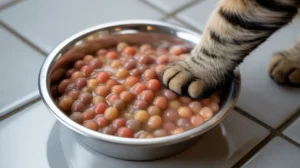
Wet food usually comes in cans or pouches. It contains around 70–80% moisture.
Pros:
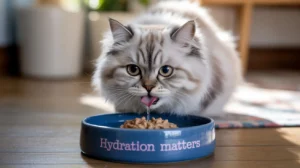
-
-
Excellent for hydration (especially for cats that barely drink water).
-
Softer texture — easier for kittens, seniors, or cats with dental problems.
-
Often smells stronger and tastes richer, so picky eaters love it.
-
Cons:
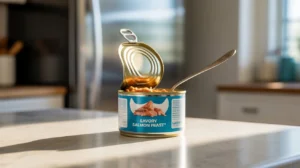
-
-
Costs more in the long run.
-
Needs refrigeration after opening.
-
Can spoil if left out too long in the bowl.
-
What Is Dry Cat Food?

Dry food, often called kibble, has about 8–12% moisture.
Pros:
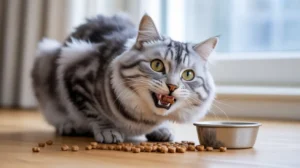
-
-
Much more affordable and convenient.
-
Long shelf life; you can leave it out for free-feeding cats.
-
Helps reduce plaque build-up through chewing.
-
Cons:
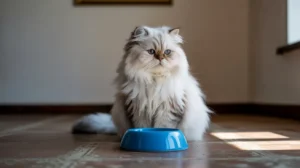
-
-
Low water content — risk of dehydration.
-
Some brands use fillers and carbs that add weight without much nutrition.
-
Not always appealing to fussy eaters.
-
Wet vs Dry Cat Food: Which Is Better?
Here comes the real question: which is better? Honestly, there’s no one-size-fits-all answer. It depends on your cat’s lifestyle, health, and even your budget.
If your cat struggles to drink water → wet food wins.
If you’re short on budget or travel often → dry food may be more practical.
Many vets actually recommend a mix of both for balance.
👉 Have you noticed if your cat drinks water frequently, or barely touches the bowl? That single observation can already guide your decision.
Vet’s Take on Wet vs Dry Food
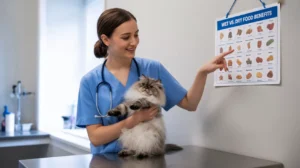
When I spoke to my vet about Milo’s diet, she broke it down like this:
-
-
Wet food supports urinary tract health and prevents kidney stress.
-
Dry food supports dental strength and calorie balance.
-
A mix provides the benefits of both while reducing risks.
-
So, instead of thinking in extremes, the vet suggested alternating meals or even mixing wet with dry in the same bowl.
That’s why most vets consider wet vs dry cat food not as a competition but as a balance.
Step-by-Step: How to Choose the Right Food
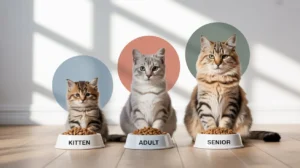
1. Look at Your Cat’s Age
-
-
Kittens → need high protein and moisture; wet food is usually better.
-
Adult cats → can handle both, but activity level matters.
-
Seniors → softer food (wet) helps if teeth are weak.
-
2. Watch Their Drinking Habits
Some cats simply hate water bowls. If that’s your cat, wet food fills the gap.
3. Consider Health Conditions
-
-
Prone to urinary issues → lean toward wet.
-
Overweight → controlled dry portions can help manage calories.
-
Sensitive stomach → wet food is often gentler.
-
4. Think About Your Routine
Are you gone all day? Dry food is easier to leave out without worrying. At home often? Wet food feeding can be managed easily.
Making the right choice becomes easier once you understand your cat’s habits — and that’s where comparing wet vs dry cat food step by step really helps.
Benefits of Wet Food
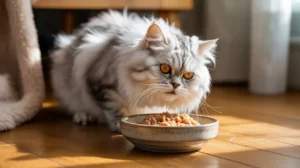
(Detailed)
-
Supports kidney function (moisture reduces strain).
-
Easier digestion.
-
Encourages appetite in fussy cats.
Example: Milo had a period where he stopped eating dry food altogether. A switch to wet food brought back his energy almost overnight.
Benefits of Dry Food
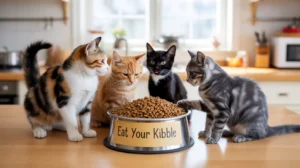
(Detailed)
-
Promotes dental crunching.
-
More affordable for multi-cat homes.
-
Simple storage.
Example: A friend of mine with three cats can’t afford full wet diets. Dry food keeps the bills under control, and she supplements with wet food 3–4 times a week.
This shows how wet vs dry cat food often comes down to budget, practicality, and what works in real life.
Possible Side Effects to Watch Out For
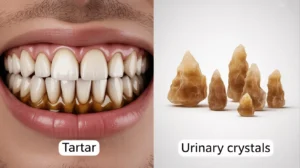
-
All Wet Diet: Can lead to dental tartar buildup if brushing isn’t done.
-
All Dry Diet: Risk of urinary crystals or dehydration.
That’s why balance usually works best.
A Real-Life Balanced Plan Example
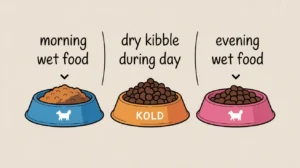
Here’s what I ended up doing for Milo (after trial, error, and some vet advice):
-
-
Morning: Half portion of wet food.
-
Daytime: Small bowl of dry kibble left out.
-
Evening: Wet food again, sometimes mixed with a handful of kibble.
-
This way Milo stays hydrated, but his teeth still get the crunching benefit. And I don’t feel guilty about him missing out on either side.
This routine really shows how wet vs dry cat food doesn’t have to be a stressful choice — a balanced plan works best.
👉 What about you? Do you think your cat would enjoy a mix, or are they picky to the core?
Final Thoughts

So, back to the big question: wet vs dry cat food which is better?
The truth is, neither one is “perfect” on its own. Wet food shines for hydration and kidney health. Dry food wins on cost, convenience, and dental care. But when used together, they cover each other’s weaknesses.
If you’re still torn, talk to your vet about your cat’s age, weight, and health. The answer may not be the same for every cat — and that’s okay.
To be honest, I no longer stand frozen in the pet food aisle. I know what Milo needs, I know what works for my routine, and I feel good about feeding him.
👉 Now it’s your turn: when you ask yourself “which is better?” — will you go wet, dry, or a mix of both?
Cat Health
Best Fish Oil Supplements for Cats — Vet Picks Made Easy with Omega-3 Benefits
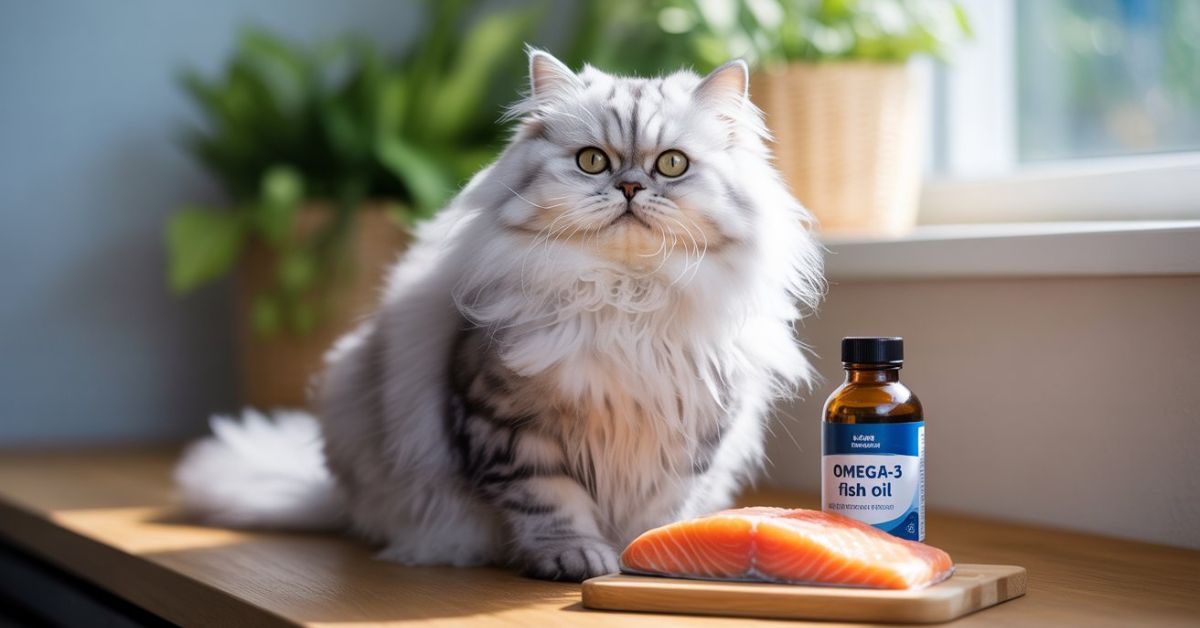
Introduction
I remember standing in the pet store aisle, confused by dozens of bottles all claiming to be the Best Fish Oil Supplements for Cats. My cat’s dull coat and constant scratching pushed me to choose carefully — and once I found the right one, the change in his skin and energy was unbelievable.
Sound familiar? Have you ever asked yourself, “Which fish oil should I trust?” or “How much is safe to give?” If so, you’re in the right place. In this guide I’ll share clear, vet-friendly steps, simple criteria, and some trusted vet picks — actually, nothing fancy, just practical advice you can use today.
What Exactly Is Fish Oil and Why Omega-3s Matter

Fish oil comes from fish that are high in fat, such as salmon, sardines, and anchovies. The reason vets care is that it has a lot of Omega-3 fatty acids, like EPA and DHA, which cats can’t make on their own. In fact, those fats are good for your skin, heart, brain, and joints.
Why does this matter? Because many commercial diets are stronger in Omega-6 fats (from chicken, corn, soy) but low in Omega-3. That imbalance can tilt the body toward inflammation. Best Fish Oil Supplements for Cats are a straightforward, evidence-based way to restore balance — so, yes, they do more than improve a coat; they support overall wellness.
Top Vet Picks: Best Fish Oil Supplements for Cats

Below are the types of products veterinarians often recommend and why. These are not brand endorsements; they’re the product types vets trust.
A quick list of things that vets look for: purity testing, clear labeling of EPA and DHA, formulas made just for pets, and sourcing that is good for the environment.
Quality salmon oil (liquid)
Easy to dose, palatable for many cats. Great for coat + skin.
Sardine-based oils
Small fish, lower risk of heavy metals. Good EPA/DHA ratio.
Pet-formulated softgels
Ideal for owners who prefer measured doses and shelf-stable options.
Krill oil (pet grade)
Alternative source with antioxidant benefits.
Omega-3 fortified treats
Handy for picky eaters, though check concentrations.
Remember: vets call these vet picks because they meet safety and efficacy checks — not because they’re flashy on the label. When you look for the Best Fish Oil Supplements for Cats, use the checklist above to separate marketing from medicine.
How to Choose Best Fish Oil Supplements for Cats — step-by-step

Okay, let’s be practical. Here’s how to pick, step by step:
Check Purity & Third-Party Testing
Find out if a third party has checked the bottles for heavy metals (like mercury), PCBs, and other harmful chemicals. Famous brands send out Certificates of Analysis (COAs). If they don’t show one? Be skeptical.
Read EPA/DHA Levels (not just “fish oil”)
Labels that list combined EPA + DHA per serving are the most helpful. For cats, you want a reasonable level per dose — not necessarily huge amounts. The Best Fish Oil Supplements for Cats clearly list these numbers.
Choose the Right Form (liquid vs capsule vs treat)
-
-
Liquid: easiest to mix into food; flexible dosing.
-
Capsule/softgel: precise dose; can be pierced for food.
-
Treats: convenient, but often lower per-serving potency.
-
If your cat is picky, a flavored liquid that blends into wet food usually works well.
Source & Sustainability Matter
Sardines and anchovies are two examples of small fish that usually have fewer toxins. Brands that say they use sustainable sources (MSC-certified, wild-caught) get points for being safe and moral.
Price vs Value — don’t chase the cheapest bottle
A low price can mean lower purity or weaker EPA/DHA. Pay for a reputable brand with clear testing. That’s better value for your cat’s health.
How to Start Fish Oil Safely (dosage + monitoring)
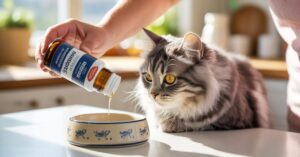
Start slow. Seriously. Here’s a safe plan:
-
-
Begin with a low dose — a few drops or 1/4 softgel every other day for 1–2 weeks.
-
Watch your cat — stool consistency, appetite, coat, energy. Note any changes.
-
Increase gradually to the vet-recommended dose (common range is 20–55 mg combined EPA+DHA per lb body weight daily — but ask your vet).
-
Keep a simple log for two weeks: dose given, stool, appetite, behavior. This helps the vet if you need feedback.
-
Talk to your vet before you start if your cat is on blood thinners or has a long-term illness. To be honest, vets appreciate when owners ask — it makes dosing safer.
Real owner examples & troubleshooting (sensitive cats, picky eaters)

A few real-life tips, because theory doesn’t always match reality:
-
-
Picky eater fix: One owner mixed a flavored salmon oil into canned food and warmed it slightly — the aroma increased acceptance.
-
Sensitive tummy: Another owner split the daily dose into twice-a-day servings and saw less digestive upset.
-
Pill-avoidant cat: A team tried softgels hidden in a small meatball — worked like a charm.
-
In short, be creative. If your cat rejects one form, try another. And record what you tried — that saves trial-and-error in the long run.
Possible side effects & when to stop

Most cats can eat fish oil without any problems, but keep an eye out for diarrhea, vomiting, or a loss of appetite. Call your vet right away if you see any strange bleeding or very soft stools. Taking too many supplements can slow down the healing of wounds or make some medicines less effective.
Check the product again (EPA/DHA levels, freshness) and talk to your vet if you don’t see any changes after 8 to 12 weeks. It’s important to have fresh oil; old oil can make things worse.
FAQs

Q: How long will it take to see results?
A: The skin and coat usually get better in 4 to 8 weeks. Joint or mood benefits can take longer.
Q: Can kittens take fish oil?
A: Yes, in vet-approved, lower doses — DHA is important for development.
Q: Is human fish oil OK?
A: Not ideal. Some human supplements may have extra ingredients or high amounts of things that aren’t good for cats. Choose formulas that are made for pets. Also good and safe for pets.
Conclusion — simple next steps (action plan)

Pick a product you can trust, like pet softgel or liquid salmon oil.
Check the levels of EPA and DHA, and also check if a third party has tested them.
Start off slowly, keep track of any changes, and only make changes when your vet tells you to.
You can use one of the vet’s criteria above to help you decide.
In short, the Best Fish Oil Supplements for Cats are those that are safe (pure), have a known amount of Omega-3 (EPA/DHA), and are easy for your cat to use. If you’re still not sure, bring some labels with you when you go to the vet next time. They can help you choose the best bottle for your cat’s needs.
-

 Enzyme Support2 months ago
Enzyme Support2 months agoHow to Improve Your Dog Digestive Health with Enzyme Supplements | Complete Guide
-

 Grain-Free vs Grain2 months ago
Grain-Free vs Grain2 months agoGrain-Free Diet for Allergic Dogs: Key Benefits Every Dog Owner Should Know
-

 Enzyme Support2 months ago
Enzyme Support2 months agoBest Digestive Enzymes for Dogs: Vet-Recommended for Digestion & Gut Health
-
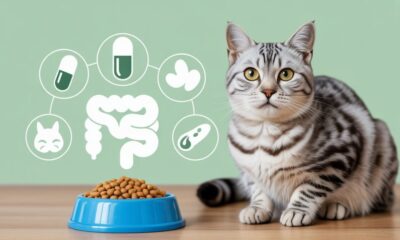
 Probiotics2 months ago
Probiotics2 months agoVet-Recommended Probiotics for Cats with Digestive Issues | A Guide to Better Gut Health
-

 Probiotics3 months ago
Probiotics3 months agoBoost Your Dog Gut Health Naturally: How Probiotics Work Wonders
-

 Bone Broth3 months ago
Bone Broth3 months agoBone Broth for Senior Dogs – Boost Joint Health and Mobility Naturally
-
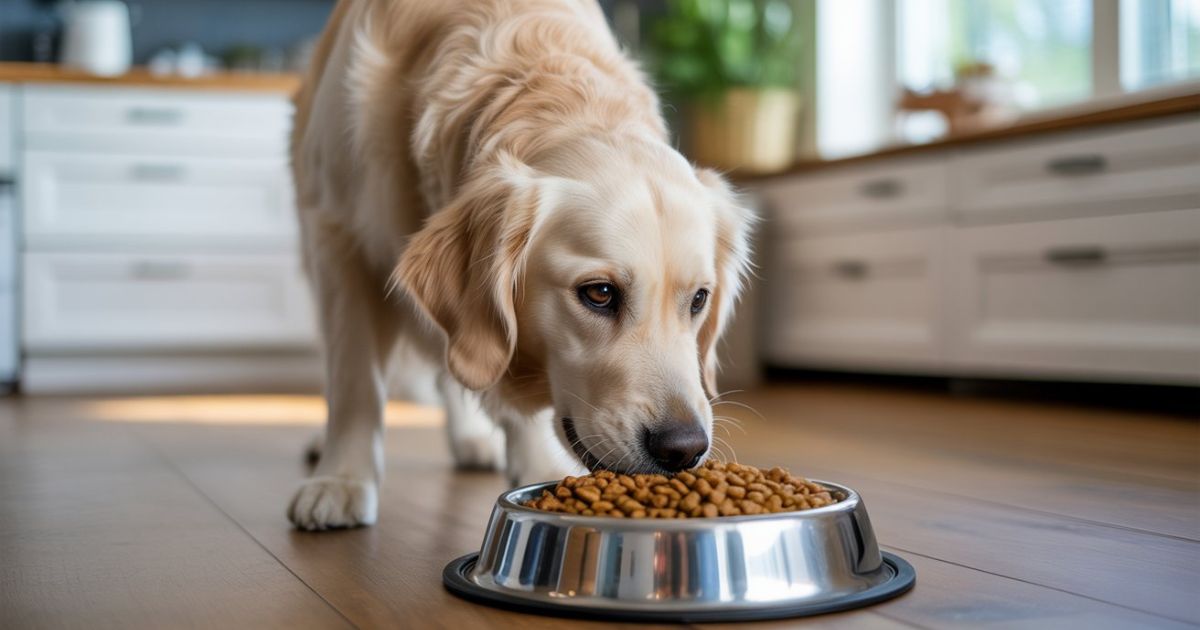
 Grain-Free vs Grain2 months ago
Grain-Free vs Grain2 months agoGrain-Free Dog Food-Good or Bad? The Essential Guide for Pet Owners
-
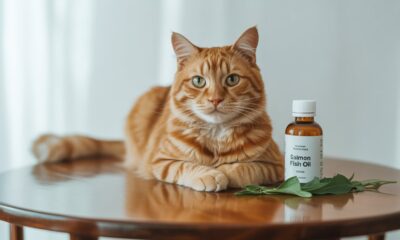
 Cat Health1 month ago
Cat Health1 month agoBenefits of Fish Oil for Cats: Why Vets Recommend Omega-3 for Cats



